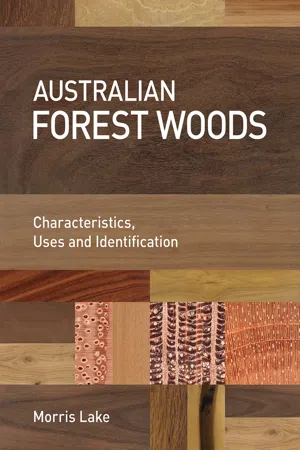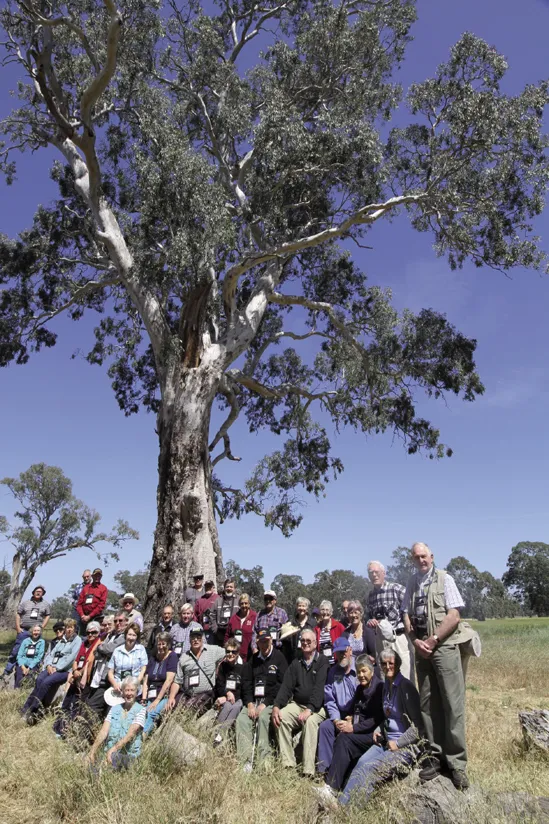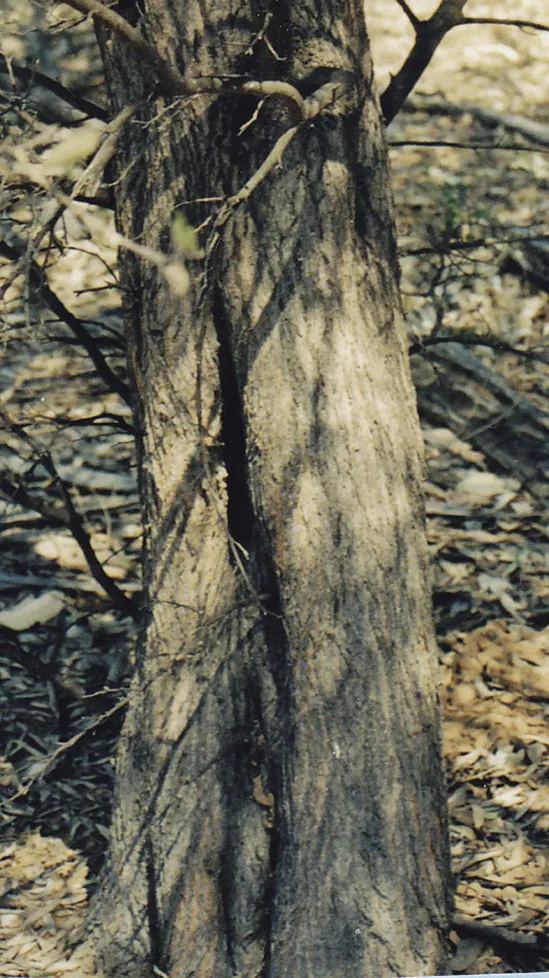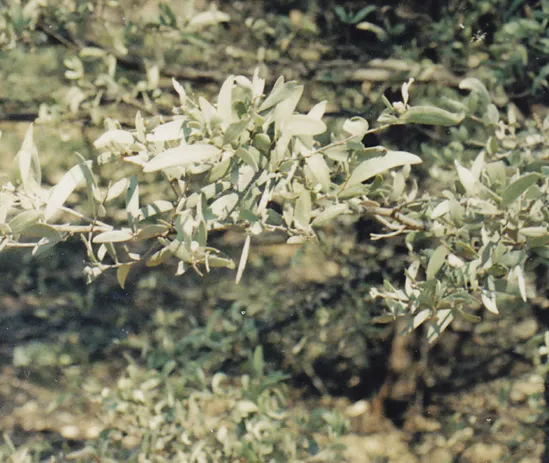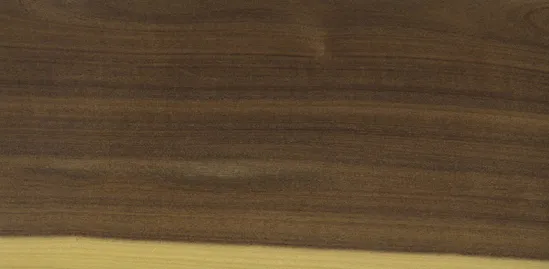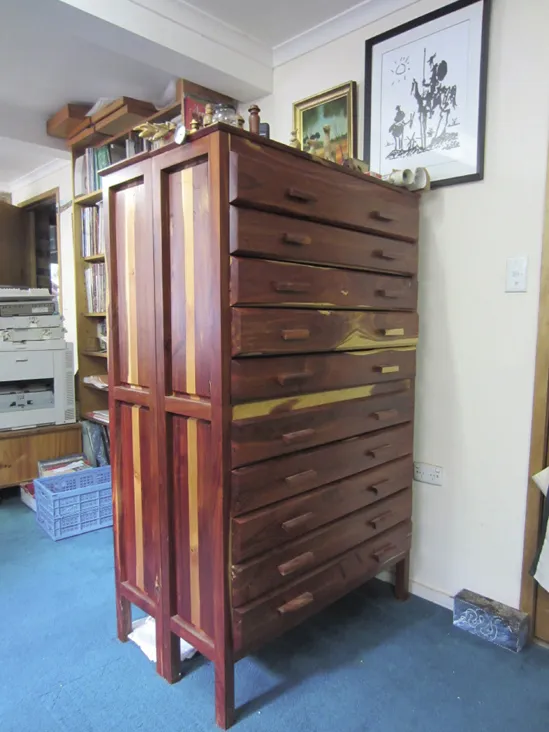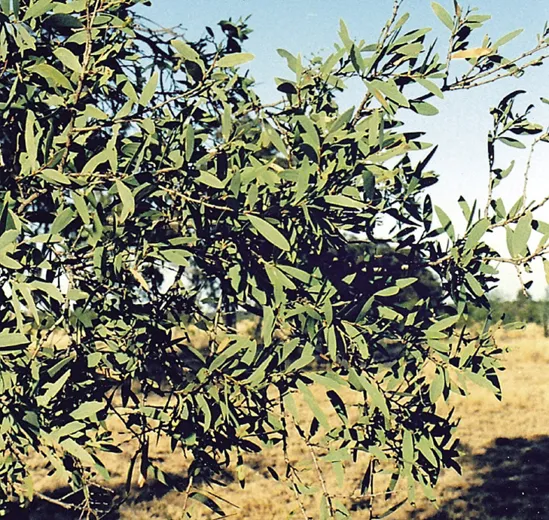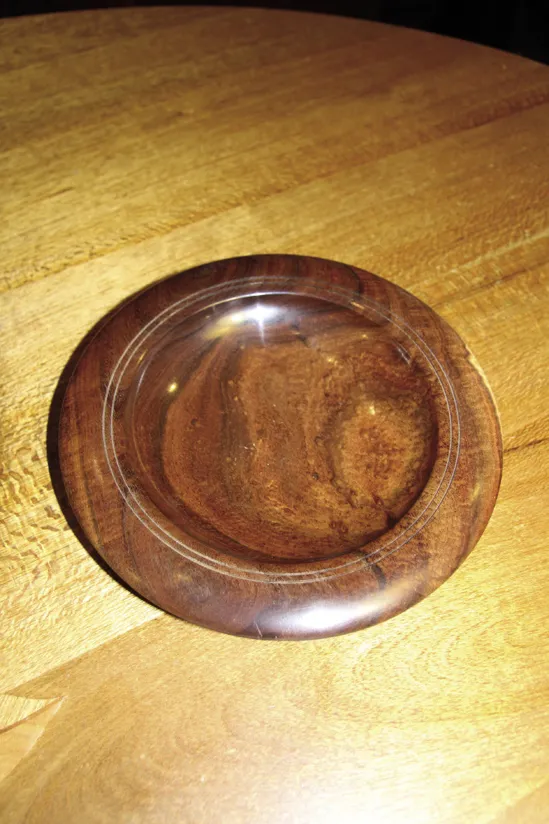![]()
Australian forest species used for their wood
This section provides the details of 130 Australian forest species used for their woods, including properties, characteristics and uses.
Members of the International Wood Collectors Society under one of South Australia’s large river red gums (Eucalyptus camaldulensis). Members of this society were of great assistance in the gathering of information for this book.
Acacia aneura
mulga
The upward pointing branches and well-defined main stem of the mulga.
The usually irregular trunk of the mulga.
Silvery-grey leaf stalks or phyllodes that function as leaves.
Derivation: Acacia from the Greek akakia (to sharpen). Dioscorides used the word in the first century AD for the Egyptian thorn tree (Acacia aranica) which is prickly. Aneura from the Greek a (not) and neuron (nerve) referring to the absence of conspicuous veins in the phyllodes. There are a number of varieties, including: var. aneura, var. argentea, var. fuliginea, var. intermedia, var. macrocarpa, var. major, var. microcarpa, var. pilbarana and var. tenuis. A. aneura is a member of Group 16 identified by their flowers in spikes and fine phyllodes.
Family: Mimosaceae contains 40–60 genera with about 3000 species in Australia, America, Africa, Asia, Melasia, the Pacific Islands and New Guinea. There are 17 genera with over 1100 species in Australia. Of these, 12 genera and around 48 species are found in rainforests. Acacia is the largest genus, containing more than 1000 species. They generally form a lower layer of trees or shrubs and are found in rainforests as well as open forests. It is a modern genus known to be around 25 million years old.
Other names: Yarran and mulga spearwood.
Distribution: Mulga is the dominant species of a million or more hectares of arid and semi-arid areas with a mean annual rainfall of 200–300 mm in Queensland and New South Wales. It also extends into areas receiving 500 mm, and in the driest areas of Western Australia the lowest annual rainfall may be only 50–60 mm. It grows on flood- and erosion-prone plains in broad valley heads, as well as being scattered on hill slopes and ridges. In sand ridge deserts it may occur in the dunes. Soil types vary but the denser stands are usually found on red earths and sands or red clay sands, and sometimes on sandy gravels. On less favourable soils such as lateritic and calcareous crusts it is very scattered. Most stands are in low open woodland or, to some extent, in tall open shrubland. It often occurs mostly in large, almost pure stands, but may be found in association with a number of other acacias.
The tree: Mulga is extremely variable with many forms recognised and occurs as a shrub or small tree from 2–9 m tall. It is readily recognised by its upward pointing branches and well-defined main stem which may be divided. The tree appears to be thrusting upwards, and it has been observed that rain, as it falls on the tree, is diverted down the phyllodes and stems and therefore falls onto the ground closer to the trunk – almost the opposite to most normal distribution – an amazing drought survival characteristic. Silvery-grey leaf stalks or phyllodes that function as leaves, are also a distinctive characteristics. Bright yellow flowers appear after late summer rain, every six or so years and grow on stalk-like 3 cm long rods. Seed pods are 4 cm long and 1.5 cm wide and are flat, narrow at the base and broad at the tip.
It is thought that the tree has a lifespan of 200–300 years. It’s also a complex species having a number of growth variants and can sometimes be hard to separate from Acacia brachystachya, A. catenulata, A. clivicola (now A. sibirica) or A. ramulosa.
Mulga is considered an important fodder tree, not because it is the most nutritious but because it’s widespread, abundant and palatable. There is variation in palatability, and local observations are necessary when planning to lop mulga for stock in times of drought. Mulga has been known to keep sheep and cattle alive for three years during times of serious drought and has been called the ‘manna tree’ of the wilderness.
Wood of Acacia aneura
The sapwood is brilliant yellow and the heartwood dark brown to red-coffee, with contrasting longitudinal markings of golden or brilliant yellow. The wood is extremely hard with an air dry density at 12% moisture of 1100–1200 kg/m3. It has a very fine texture and therefore turns well and takes a high polish. It machines well and fixing is satisfactory. Shrinkage is 2.2% tangentially and 1.6% radially, so it is very stable. Care is needed when seasoning to prevent end-splitting.
See macrophotographs of Acacia aneura on page 183.
A ball-point pen turned from Acacia aneura.
History and usage
The word mulga is derived from an Aboriginal name for a shield made from the tree, and the tree formed a very important part in Aboriginal life, mainly because of its wide distribution – it was always at hand to form a shelter and as fuel for a fire. Mulga was also used in the production of nulla-nullas, an Aboriginal version of a club, as well as for boomerangs and bull-roarers – which mainly fill a role in ceremonies, or as toys – as well as for tools, such as sticks to lift edible roots, spear shafts and jagged spear ends. The seed was also part of the diet for some Aboriginal people.
The author’s 20 drawer (back to back) wood specimen cabinet crafted from Acacia aneura and holding 1800 standard wood specimens.
Following European settlement, mulga wood was used for making many ornaments which were popular all over Australia. It’s still sometimes used for fencing. Because the timber is so strong it was used for bullock yokes, but was made in smaller dimensions. Present-day use is mainly for turning where small ornamental articles are produced for tourists. The timber is also used locally for fuel.
With so much wood available, an effort is being made to have the timber recognised for use in furniture and cabinet making, either as solid wood or as a veneer. The wood grain contains great beauty and finishes well.
Small green galls – mulga apples – are formed by wasp larvae and are found attached to mulga foliage. These and the gum which is often found oozing from the trunk are sweet treats eaten by Aboriginal children. Mulga apples have a taste similar to dried apple.
To straighten mulga spears Aboriginal people coated the spears with melted animal fat and ‘ran’ these under the hot coals of a fire – not through the coals – and while the spear was still hot it could be straightened. They straightened the hot spear by bending it while holding with both hands – over their head. was this done for some reason to do with nature, or something that we cannot really appreciate?
Acacia cambagei
gidyea
A solid canopy form of gidyea.
The deeply furrowed bark of gidyea.
The leaves (phyllodes) have fine veins, with one or two more prominent, and give off a rather offensive smell during humid or wet weather.
A gidyea platter turned by Ken Jackson.
Synonym: Racosperma cambagei.
Derivation: Acacia from the Greek akakia (to sharpen). Dioscorides used the word in the first century AD for the Egyptian thorn tree (Acacia aranica) which is prickly. Cambagei honours R. H. Cambage (1859–1928), a geologist with a wide knowledge of Australian plants. A. cambagei is a member of Group 14 identified by their flowers in globular ...
